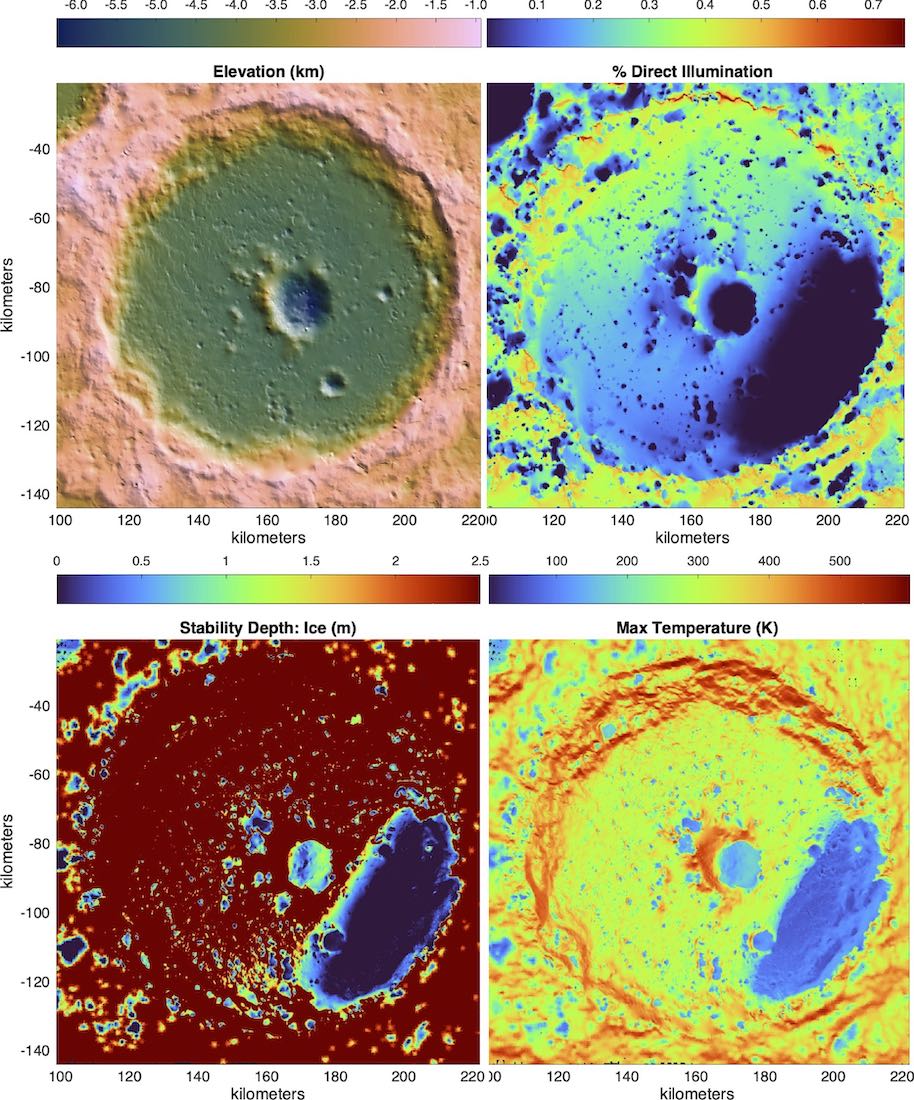New Constraints on the Volatile Deposit in Mercury’s North Polar Crater, Prokofiev
Michael Kenneth BarkerThere is strong evidence from multi-instrument, multi-wavelength measurements that Mercury’s north polar region hosts permanently shadowed regions (PSRs) with water ice and other volatiles on or near the surface. For example, some PSRs have radar signals consistent with water ice (Harmon et al. 2011). MESSENGER found that these radar-bright deposits can look bright or dark in the optical and near-IR depending on the temperature of the region (Neumann et al. 2013; Chabot et al. 2014). The bright regions are hypothesized to be exposed surface ice while the dark regions are thought to be sublimation lag deposits of complex organic volatiles (Paige et al. 2013). There are still many unanswered questions about these volatiles, like what is their source, distribution, abundance, and evolution? Illumination and thermal models are key tools to address these questions, but they require detailed topography of the PSR host craters.
To help answer some of these questions, we have made new high-resolution topography, illumination, and thermal models of Mercury’s north polar crater, Prokofiev (see Figure 1), using the same techniques that we developed in Hamill et al. (2020). We use locally-optimized MLA altimetry and MDIS images together with the Ames Stereo Pipeline shape-from-shading tool (Alexandrov & Beyer 2018). The resulting hybrid DEM, with a pixel scale of 125 m/pix, is more realistic than either the MLA-based or image-based DEM alone.
These new models allow a more detailed look at Prokofiev’s topography, illumination, and thermal environment. The new models confirm previous results that water ice is stable at the surface within the PSR for geologic timescales. The largest radar-bright region in Prokofiev is confirmed to extend up to several kilometers past the boundary of its PSR making it unique on Mercury for hosting a significant radar-bright area outside a PSR. The near-IR normal albedo distribution inside Prokofiev’s PSR suggests the presence of a darkening agent mixed with the surface ice. Linear mixture models predict at least ~50% of the PSR surface area to be covered with this dark material. Using improved MLA altimetry in this crater, we place an upper limit of 26 m on its ice deposit thickness. The 1 km-baseline topographic slope and roughness of the radar-bright deposit are lower than the non-radar-bright floor, but this difference is not statistically significant when compared to the non-radar-bright floor’s natural topographic variations. These results place new constraints on the nature of Prokofiev’s volatile deposit that will inform future missions, such as BepiColombo.
Data
Data Usage Policy
References
Hamill, C. D., Chabot, N. L., Mazarico, E., et al. 2020, PSJ, 1, 57 https://doi.org/10.3847/PSJ/abb1c2
Chabot, N. L., Ernst, C. M., Denevi, B. W., et al. 2014, Geo, 42, 1051. https://doi.org/10.1130/G35916.1
Alexandrov, O., & Beyer, R. A. 2018, E&SS, 5, 652. https://doi.org/10.1029/2018EA000390
Harmon, J. K., Slade, M. A. & Rice, M. S. 2011, Icar, 211, 37. https://doi.org/10.1016/j.icarus.2010.08.007
Neumann, G. A., Cavanaugh, J. F., Sun, X., et al. 2013, Sci, 339, 296. https://doi.org/10.1126/science.1229764
Paige, D. A., Siegler, M. A., Harmon, J. K., et al. 2013, Sci, 339, 300. https://doi.org/10.1126/science.1231106
